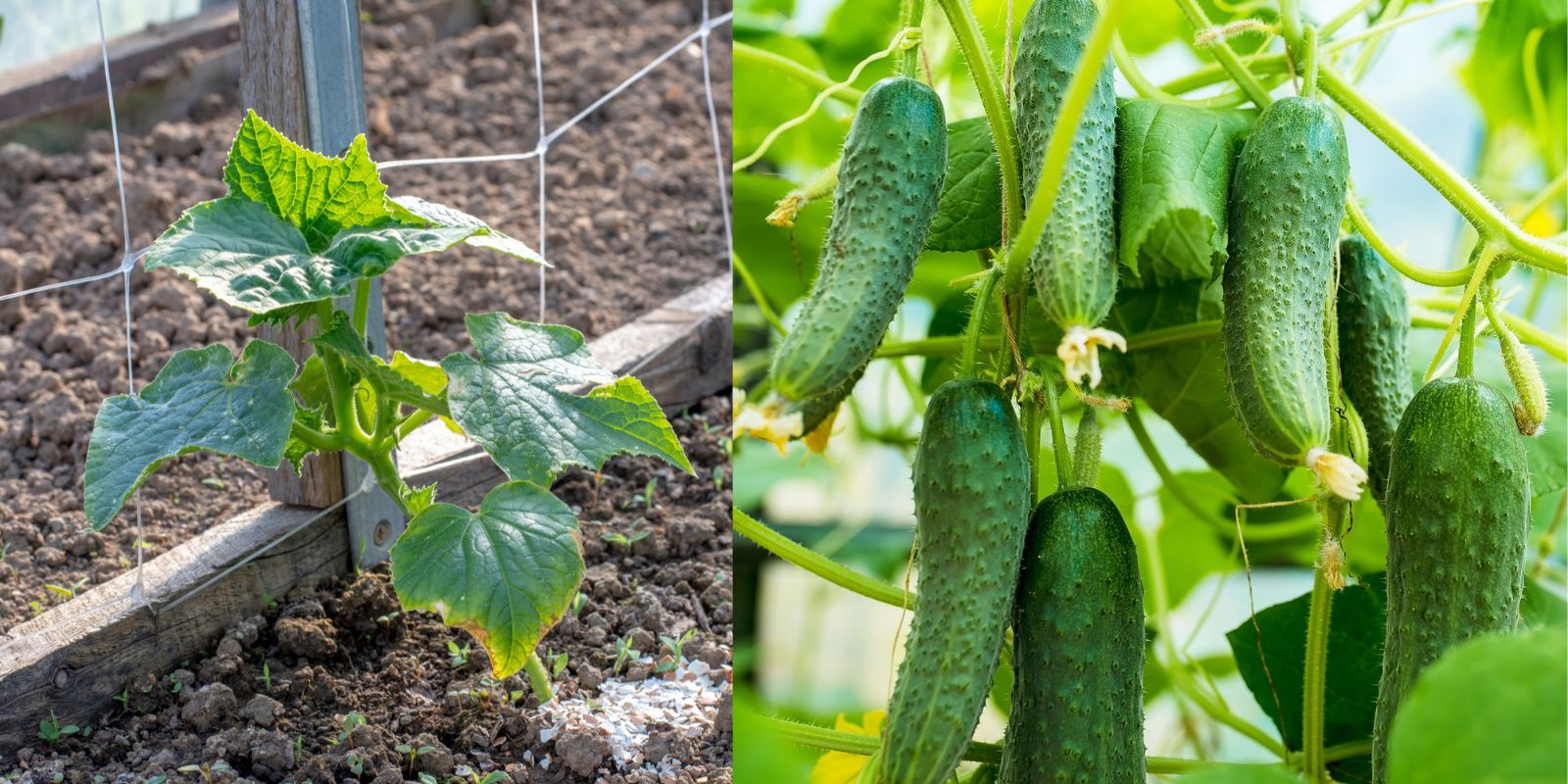Cucumbers are one of the most popular and rewarding vegetables to grow at home. However, many gardeners struggle with small, bitter, or misshapen fruits because they unknowingly make critical mistakes. If you’ve been wondering why your cucumber plants aren’t producing the way they should, it’s time to rethink your approach. This guide will help you grow cucumbers the right way—ensuring healthy plants, abundant harvests, and crisp, delicious fruits.
Understanding Cucumber Growth
Cucumbers belong to the Cucurbitaceae family, which includes melons, squash, and pumpkins. They thrive in warm weather, need plenty of water, and benefit from proper support. By meeting their key growth requirements, you can set your cucumber plants up for success.
1. Choose the Right Variety
Many gardeners fail because they select the wrong type of cucumber for their growing conditions. Cucumbers come in different varieties, each suited for specific uses:
- Slicing Cucumbers – Large, smooth-skinned cucumbers ideal for fresh eating.
- Pickling Cucumbers – Smaller cucumbers with bumpy skin, perfect for pickling.
- Burpless Cucumbers – Low in bitterness and easier to digest.
- Bush Cucumbers – Compact plants suited for small spaces or containers.
- Vining Cucumbers – Require trellising but produce higher yields.
Check your region’s climate and space availability before selecting a variety.
2. Start with Warm Soil
Cucumbers are heat-loving plants. One of the most common mistakes gardeners make is planting too early when the soil is still cool. This leads to slow germination and weak growth.
- Soil temperature should be at least 65°F (18°C) before planting.
- Use black plastic mulch to warm the soil faster.
- If starting indoors, plant seeds in biodegradable pots 3-4 weeks before transplanting.
3. Provide Proper Support
Cucumber vines left to sprawl on the ground are more susceptible to pests, diseases, and poor air circulation. Supporting your cucumbers helps them grow straight, stay clean, and maximize yield.
- Use a trellis, cage, or netting to train the vines.
- Trellising improves airflow and reduces fungal issues like powdery mildew.
- Vertical growth makes harvesting easier and saves garden space.
4. Water Deeply and Consistently
Inconsistent watering is one of the biggest reasons cucumbers turn bitter. Cucumbers are made up of 95% water, so they require deep and regular watering.
- Water early in the morning to avoid fungal diseases.
- Keep the soil consistently moist (not soggy) to prevent bitterness.
- Use mulch to retain moisture and prevent weeds.
- Avoid overhead watering—drip irrigation or a soaker hose is best.
5. Fertilize Correctly for Healthy Growth
Many gardeners either over-fertilize or use the wrong type of fertilizer, leading to excessive leaves but few cucumbers.
- Use a balanced fertilizer (5-10-10) for healthy flowers and fruit development.
- Compost, manure, or organic fertilizer adds necessary nutrients naturally.
- Avoid excessive nitrogen, which promotes leafy growth over fruit production.
- Apply fertilizer at planting, during flowering, and mid-season for best results.
6. Ensure Proper Pollination
Poor pollination can result in small or misshapen cucumbers. Since cucumbers have separate male and female flowers, they need bees or manual pollination to set fruit.
- Plant bee-friendly flowers nearby to attract pollinators.
- Hand-pollinate using a small brush or cotton swab if pollinators are scarce.
- Avoid pesticides that harm beneficial insects.
7. Prune for Better Yield
Pruning cucumber plants correctly ensures better air circulation and directs energy toward fruit production.
- Remove excessive side shoots to promote stronger vines.
- Trim yellowing or diseased leaves to prevent fungal spread.
- For vining cucumbers, pinch off new growth after 4-5 feet to encourage lateral branching.
8. Protect Against Pests and Diseases
Cucumber plants are prone to pests like aphids, cucumber beetles, and spider mites, as well as diseases like powdery mildew and downy mildew.
- Use row covers to keep pests away from young plants.
- Apply neem oil or insecticidal soap to control aphids and mites.
- Rotate crops yearly to prevent soil-borne diseases.
- Remove infected plants immediately to stop the spread of disease.
9. Harvest Regularly for Continuous Production
Many gardeners make the mistake of letting cucumbers grow too large, which reduces plant productivity.
- Pick cucumbers when they are 6-8 inches long for best flavor.
- Frequent harvesting encourages more fruit production.
- Use sharp scissors or pruners to avoid damaging vines.
10. Store Cucumbers Properly
To enjoy fresh cucumbers longer, store them the right way:
- Do not store in the refrigerator for too long – cucumbers are sensitive to cold temperatures.
- Wrap in a paper towel and place in a perforated bag to keep them fresh for up to a week.
- For long-term storage, consider pickling or making cucumber relish.
Common Mistakes to Avoid
- Planting too early – Cold soil leads to slow growth and weak plants.
- Over-fertilizing – Too much nitrogen results in leafy vines with few fruits.
- Watering inconsistently – Causes bitterness and poor fruit quality.
- Neglecting pollination – Leads to poor fruit set.
- Skipping support structures – Increases disease risk and reduces yield.
Final Thoughts
Growing cucumbers the right way isn’t complicated, but it requires attention to key details. By choosing the right variety, providing proper support, watering consistently, and ensuring good pollination, you’ll enjoy a bountiful harvest of crisp, delicious cucumbers.
💬 What’s your biggest challenge when growing cucumbers? Drop your questions and tips in the comments! 🥒🌱
#CucumberGrowingTips #GardeningHacks #OrganicGardening #HomeGrown #GrowYourOwnFood #GardenSuccess

